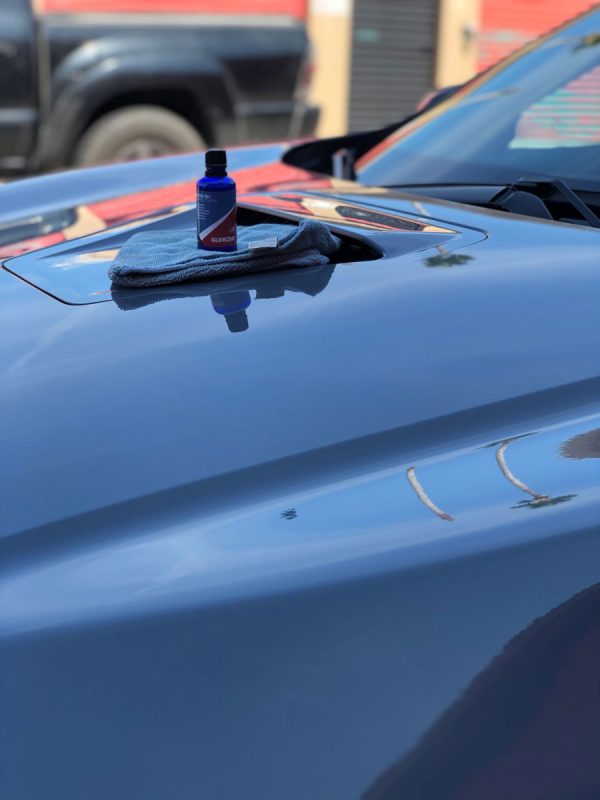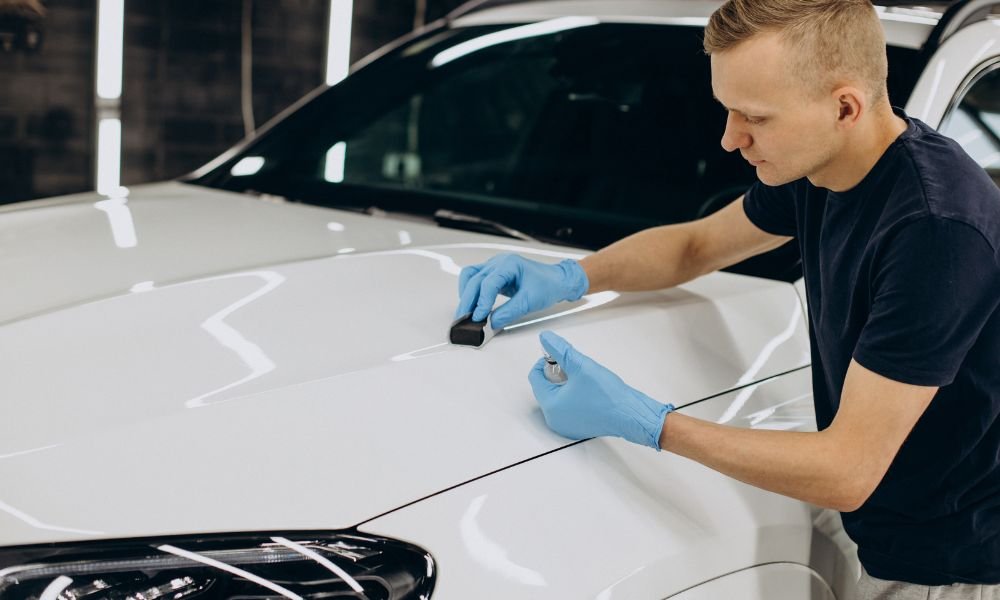Ceramic Coating vs. Sealants: Understanding the Differences for Your Car
Ceramic Coating vs. Sealants: Understanding the Differences for Your Car
Blog Article
The Value of Ceramic Coating: Safeguarding Your Vehicle's Exterior With Accuracy
In an era where preserving the visual and useful honesty of your vehicle is critical, ceramic covering emerges as a crucial remedy. With its special bonding residential properties, ceramic coating supplies a degree of security that much goes beyond standard waxing techniques.
Advantages of Ceramic Coating
When it comes to maintaining an auto's visual charm, ceramic finishing provides significant benefits. By developing a semi-permanent bond with the car's paint, ceramic coverings effectively protect against oxidation and fading, making certain that the automobile maintains a shiny, showroom-like surface for an extended duration.
In enhancement to its protective top qualities, ceramic finish provides remarkable hydrophobic homes, causing water and various other liquids to grain off effortlessly. This feature streamlines the cleaning procedure, as dust and particles are less most likely to abide by the surface area, minimizing the frequency and initiative required for maintenance. Furthermore, the coating's resistance to chemical stains from acidic pollutants like bird droppings and tree sap is one more significant benefit, lessening potential paint damages.
Ceramic coverings additionally improve scratch resistance, supplying a layer that can absorb minor abrasions and swirl marks. This quality is specifically beneficial in keeping a beautiful surface area, lowering the possibility of noticeable imperfections and maintaining the stability of the automobile's paintwork gradually.

How Ceramic Finish Works
Understanding the technicians behind ceramic finishing discloses its efficiency as a protective solution for vehicles. Ceramic coatings are basically liquid polymer applications that chemically bond with a vehicle's factory paint, creating a safety layer. This layer acts as a barrier versus environmental impurities such as ultraviolet, dirt, and gunk rays, which can deteriorate a cars and truck's outside with time. The vital part in ceramic layer is silicon dioxide (SiO2), which stems from quartz crystals and is recognized for its exceptional hardness and resilience.
Application of ceramic coating entails a careful process. This shield enhances the car's gloss and hydrophobic properties, facilitating easier cleaning by creating water and contaminants to grain and slide off easily.
Furthermore, the finish's molecular framework provides resistance to small scratches and chemical spots. Unlike waxes or sealers that sit on top of the paint, ceramic coatings integrate with the surface, using long-lasting security. This integration is basic to its effectiveness, making certain the automobile's coating continues to be pristine for years.
Contrasting Ceramic Coating to Alternatives
In the realm of vehicle security, ceramic coating stands as a powerful option when contrasted to traditional options such as sealants and waxes. While waxes supply a temporary lustrous coating, normally lasting just a few weeks to months, ceramic finishings give a longer-lasting solution, frequently withstanding for many years. This longevity is credited to the chemical bonding that happens when ceramic layers are applied, developing a solid layer that is resistant to environmental risks.
Contrastingly, sealants, although more resistant than waxes, still fall brief of the durable security used by ceramic finishes. Sealants can normally last for up to a year, providing a synthetic guard against certain elements. Nevertheless, they do not have the premium hydrophobic buildings and UV defense that ceramic coverings provide.
Moreover, ceramic coverings use boosted scratch resistance, which neither waxes nor sealants can successfully match (ceramic coating). This is particularly beneficial in keeping an automobile's beautiful look. Additionally, ceramic finishings streamline upkeep initiatives by lowering the adherence of dirt and crud, thus promoting simpler cleansing. In summary, while typical waxes and sealants offer standard protection, ceramic find out here now coverings offer a thorough, long-term service that considerably maintains the car and enhances's outside finish.
Application Process Explained
Using ceramic coating to a lorry calls for a meticulous procedure to guarantee ideal outcomes and durability. The preliminary description step entails completely cleaning the automobile's surface area to get rid of dust, oil, and previous waxes. This is critical for ensuring the covering sticks effectively. A pH-neutral hair shampoo and a clay bar treatment are frequently made use of to accomplish a beautiful surface area. As soon as cleansed, the automobile is dried and brightened to remove any type of imperfections, as any existing swirls or scratches can become much more pronounced after the layer is applied.
Adhering to surface area preparation, the application of the ceramic covering begins. The coating is typically applied in a climate-controlled environment to stop dirt fragments from deciding on the fresh cleaned up surface. Using an applicator pad, the ceramic coating is applied in little areas to ensure also insurance coverage. It is important to adhere to the manufacturer's standards pertaining to the ideal healing time and application thickness.
After application, the finishing requires a certain treating duration, throughout which the automobile ought to be safeguarded from water and impurities. This treating process can vary depending upon the product but usually ranges from 24 to 2 days. Eventually, this thorough procedure is pivotal in accomplishing a shiny and durable coating.
Maintenance Tips for Durability
To maintain the longevity of a ceramic finishing, adherence to a disciplined maintenance routine is vital. Stay clear of automated cars and truck cleans, as their harsh brushes can endanger the finishing's integrity.
Post-wash, drying out the car with a clean microfiber towel avoids water spots that may deteriorate the finishing in time. Furthermore, use a ceramic finishing booster every couple of months. These boosters enhance the Website hydrophobic buildings and enhance the finish's safety abilities, ensuring it stays reliable against impurities.
Remember that auto parking areas play an important function in upkeep. ceramic coating. Whenever feasible, park in shaded areas to reduce UV exposure, which can gradually damage the finish. For long-term storage space, consider utilizing a cars and truck cover for included security versus ecological elements
Conclusion
In conclusion, ceramic coating serves as a vital protective layer for vehicle exteriors, providing resilient defense versus ecological aspects such as crud, uv, and dirt rays. Recognizing the application process and sticking to maintenance recommendations are crucial for maximizing the durability and efficiency of ceramic covering.
When it comes to protecting an automobile's visual appeal, ceramic covering provides considerable benefits. By forming a semi-permanent bond with the car's paint, ceramic layers successfully stop oxidation and fading, ensuring that the car maintains a glossy, showroom-like surface for an extended duration. Ceramic finishes are essentially fluid polymer applications that chemically bond with an automobile's manufacturing facility paint, developing a protective layer. In summary, while conventional waxes and sealants supply basic defense, ceramic coatings offer a comprehensive, long-lasting service that significantly maintains the vehicle and improves's outside coating.

Report this page